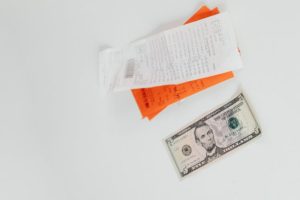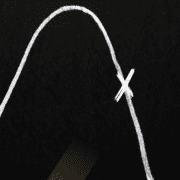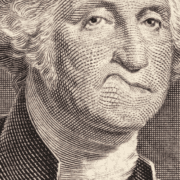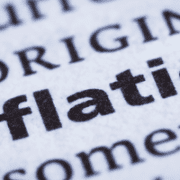Interest – Inflation = #REF
To listen to the audio version of this article click here.
I have to admit that I derive some pleasure in taking on hoary old myths. For example, some economists assert that the interest rate you see on the Treasury bond is not real. You see, it’s only nominal. To calculate the real rate, they say you must adjust the nominal rate by inflation.
Real Interest Rate = Nominal Interest – Inflation
It seems to make sense. Suppose you have enough cash to feed your family for 2,000 days. Then the general price level increases by 15%. You still have the same dollars, but now you can only buy groceries for 1,700 days. You’ve been robbed, some of your purchasing power stolen. Therefore you want to earn enough interest to overcome this loss.
This view is flawed.
Normally, you don’t spend your savings, only the income on it. In ancient times, people had to hoard a commodity like salt when they worked. In retirement, they sold it to buy food. Modern economies evolved beyond that, with the development of interest. Retirees should not have to liquidate their life savings.
Inflation and Retirement Savings
Now, let’s examine this idea of correcting the interest rate using the Consumer Price Index, or CPI. We’ll skip over the problems in trying to measure prices, and avoid the controversy over whether CPI does a good job. We’ll just compare two retirees from two different eras.
Clarence was retired way back in 1979. Suppose he had $100,000 saved up. According to the St. Louis Fed, the CPI was 68.5 on January 1, 1979 and it rose to 78.0 one year later. This means prices rose by about 14%—what most people call inflation. Also according to the St. Louis Fed, a 3-month certificate of deposit offered 11.23%. There are many interest rates, but let’s use this one for simplicity.
The popular view focuses on his lost purchasing power. He begins the year with $100,000. That amount could buy some meat and potatoes. Clarence ends the year with $111,230 in principal + interest. Liquidating that larger amount buys less hamburger and fewer fries at the higher prices at the end of the year. Therefore Clarence had a loss, and the loss is interest – CPI, or 2.77% of $100,000, which $2,770.
Interest and Wealth
I suggest another view. The interest afforded Clarence $11,230 worth of food. According to the U.S. Census Bureau, the median income in 1979 was $16,841. Clarence made 2/3 of his former income. That’s about right for a retiree without a mortgage or commuting expenses. He could eat pretty well. Although the falling dollar did erode his wealth, we’re focusing on how Clarence experiences interest in the real world.
Now, consider Larry, a recent retiree. Larry has $1,000,000 in savings. CPI actually fell over the past year. Interest on a 3-month CD is negligible—0.03%. Again, we’re not focused on whether CPI is accurate. Just grant for the sake of argument, that some prices dropped and this was matched by a rise in others.
In the standard view Larry appears to be better off than ol’ Clarence. Larry lost no purchasing power, unlike Clarence’s loss of almost 3%. This is deceptive and misleading.
The stark reality is that Larry earns a scant $300 in interest. He can’t afford groceries on this paltry sum, so he is spending down his savings. The median income was $52,250 in 2013 (the latest year available). To earn 2/3 of that—and match Clarence—poor Larry would need over $116 million.
Purchasing Power vs. Yield Purchasing Power
The notion of nominal interest paints a misleading picture of Clarence losing purchasing power and Larry keeping even. If you look at what they can buy with the interest on their savings—Yield purchasing power—you see that Clarence was living well while Larry is quickly spending down his life’s savings.
Make sure to subscribe to our YouTube Channel to check out all our Media Appearances, Podcast Episodes and more!
Additional Resources for Earning Interest on Gold
If you’d like to learn more about how to earn interest on gold with Monetary Metals, check out the following resources:
In this paper we look at how conventional gold holdings stack up to Monetary Metals Investments, which offer a Yield on Gold, Paid in Gold®. We compare retail coins, vault storage, the popular ETF – GLD, and mining stocks against Monetary Metals’ True Gold Leases.
The Case for Gold Yield in Investment Portfolios
Adding gold to a diversified portfolio of assets reduces volatility and increases returns. But how much and what about the ongoing costs? What changes when gold pays a yield? This paper answers those questions using data going back to 1972.










Thanks Keith. I hadn’t thought of it that way.
Great piece Keith,
I wonder if we’ve really noticed the long-term consequences of 0 rates yet though. Although grandma with her cd’s is not earning interest and may be spending her principle, investors in dividend stocks have collected a a good yield and considerable capital appreciation during this period. If we get a QE4 and 5 etc, can’t this go on for some time ?
Andrew
Thanks for your comments.
akustas: I don’t think we have really felt the consequences of this yet. Btw, how much of those dividends were financed by borrowing?
I will have more to say about YPP. :)
I do not understand your example. You are not playing a fair game here. Clarence starts with wealth of only 6 times the median income where Larry starts with over 18 times the median income. You also give Clarence a real interest rate of -2.77% and Larry a real rate of ~0%.
At the end of the year Clarence has lost 14% of his wealth’s purchasing power to inflation but Larry has only lost the 3.5% he consumed. So who is in the better position after one year?
Assuming median income keeps up with inflation, the next year Clarence only has 5 times median income in wealth saved where as Larry would have the same 18 times.
It seems to me Larry started out ahead, was given an advantage and still remains ahead in the game of wealth.
Interest rates are at ~0% because there are more savers than borrowers (in economics they’re called investors), and so the market for loanable funds clears at an equilibrium near 0%. Tuff poop for Larry.
It’d be nice if the amount of borrowers increased. But unfortunately all governments have been hoodwinked by neocon dogma that there’s no such thing as a government investment with positive return (like roads or education), and it seems even businesses have given up on investment in favour of share buybacks and bigger payoffs to internal parasites like C-levels.
So equilibrium stays at zero til someone starts borrowing.
As for Larry, what he’s essentially trying to do is live off a rent. Unfortunately, as above, everyone’s trying to do the same thing, and there aren’t enough renters (i.e. borrowers, i.e. investors). So boo hoo Larry.
I think your calculation is not correct. A real rate of 0% is always better than a real rate of -2.77% regardless of the level of nominal interest. Clarence has a loss of USD 2770, i.e. he ends the first year with a capital value of 972300. Any compsumption must come out of his diminished capital.
Larry has still about 1000000 at the end of the first year and he also has to consume capital if this is is means of subsistence. Yet, while Clarence has lost 2770 dollars of his purchasing power to inflation, Larry has not. Again, the real rate is the only measure that counts. This does of course not mean that high nominal yields play no role at all. High nominal yields could trick Clarence into a money illusion and cause him to spend more than he otherwise would.